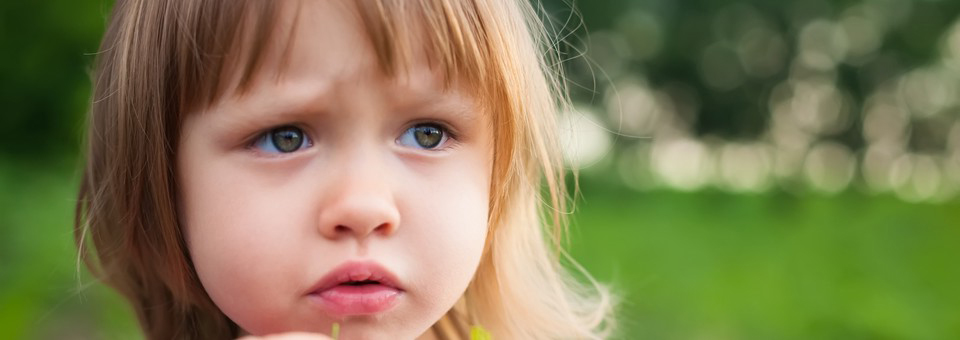Beskrivelse og vurdering av tiltaket: Circle of Security (COS) Virginia - Familiemodellen
DOI:
https://doi.org/10.7557/25.7650Keywords:
trygg tilknytning, barn, omsorgsperson, terapeutisk intervensjon, tilknytningsproblematikk, selvregulering, sosial kompetanse, forebygge skjevutviklingAbstract
Dette er ikke den nyeste artikkelen om dette tiltaket. Oppdatert artikkel: https://doi.org/10.7557/25.7585
Innledning: Circle of Security (COS) har som mål å fremme trygg tilknytning mellom barn og omsorgsperson. COS Virginia er en av to versjoner av COS, og Familiemodellen er en terapeutisk intervensjon fra COS Virginia. Målsettingen er å styrke tilknytningen mellom foreldre og barn når barn har, eller er i risiko for å utvikle tilknytningsproblematikk. Dette antas å styrke barnets utvikling av selvregulering, sosial kompetanse og forebygge skjevutvikling. Nasjonalt kompetansenettverk for sped- og småbarns psykiske helse, RBUP Øst og Sør implementerer COS Virginia i Norge.
Beskrivelse av tiltaket: COS International - Intervention, er en individuelt målrettet intervensjon som går over ca. 20 - 30 timer. De enkelte foreldre støttes i løpet av intervensjonen til å reflektere over samspill med eget barn, basert på video-opptak. I løpet av intervensjonen skal foreldrene etablere en trygg base overfor barna sine, lære om betydningen av tilknytning, utvikle evne til å forstå barnets signaler og styrke den følelsesmessige involveringen med barnet.
Evaluering og erfaringer med tiltaket:Det foreligger ingen norske effektstudier av COS Virginia Familiemodell. Det er gjennomført noen studier på høyrisikopopulasjoner i USA, men det uklart om disse resultatene uten videre kan generaliseres til norske forhold.
Ungsinnpanelets klassifisering: Circle of Security (COS) International – Intervention, klassifiseres påevidensnivå 2: sannsynlig virksomt tiltak.
References
Ainsworth, M. D. S., Bell, S. M. & Stayton, D. J. (1971). Individual differences in strange-situation behavior of one-year-olds. I H. R. Schaffer (Red.), The origins of human social relations (s. 17 - 57). New York: Academic Press.
Ainsworth, M.D.S, Blehar, M.C., Waters, E. & Wall, S. (1978). Patterns of attachment: A psychological study of the strange situation. Hillsdale, New Jersey: Erlbaum.
Bernard K, Dozier M, Bick J, Lewis-Morrarty E, Lindhiem O & Carlson E. (2012). Enhancing attachment organization among maltreated children: results of a randomized clinical trial. Child Development. 83, 623-36. doi: 10.1111/j.1467-8624.2011.01712
Bowlby, J. (1969). Attachment and loss: bd. 1, Attachment. New York: Basic Books.
Brantzæg, I., Smith, L. & Torsteinson, S. (2011). Mikroseparasjoner. Oslo: Fagbokforlaget.
Cassidy, J., Ziv, Y., Stupica, B., Sherman, L. J., Butler, H., Karfgin, A., Cooper, G., Hofman, K.T. & Powell, B. (2010). Enhancing attachment security in the infants of women in a jail-diversion program. Attachment and Human Development, 12, 333–353. doi: 10.1080/14616730903416955
COS - Circle of Security, Virginia-modellen. (2012). Hentet 8.11.2012, fra http://www.r-bup.no/CMS/cmspublish.nsf/doc/F13CC4C32BF601CAC12579810033DE0D
Dutra, L., Bureau, J-F., Holmes, B., Lyubchik, A. & Lyons-Ruth, K. (2009). Quality of early care and childhood trauma: A prospective study of developmental pathways to dissociation. Journal of Nervous and Mental Disease, 197, 383–390. doi: 10.1097/NMD.0b013e3181a653b7
Grienenberger, J. F., Kelly, K. & Slade, A. (2005). Maternal reflective functioning, mother–infant affective communication, and infant attach-ment: Exploring the link between mental states and observed caregiving behavior in the intergenerational transmission of attachment. Attachment and Human Development, 7, 299–311. doi: 10.1080/14616730500245963
Hoffman, K. T., Marvin, R.S., Cooper, G. & Powell, B. (2006). Changing toddlers’ and preschoolers’ attachment classifications: The Circle of Security Intervention. Journal of Consulting and Clinical Psychology, 74, 1017–1026. doi: 10.1037/0022-006X.74.6.1017
Lindberg, A., Mauseth, T. & Sandnes, K. (2012). Trygghetssirkelen “Circle of Security”. Manual for familiemodellen. Oslo: Nasjonalt kompetansenettverk for spe- og småbarns psykiske helse. Regionsenter for barn og unges psykiske helse, Helseregion Øst og Sør.
Lyons-Ruth, K. & Jacobvitz, D. (1999). Attachment disorganization: Unresolved loss, relational violence and lapses in behavioral and attentional strategies. I J. Cassidy & P. R. Shaver (Red.), Handbook of attachment (1. utg.): Theory, research, and clinical applications(s. 520-554). New York: Guilford.
Main, M. & Hesse, E. (1990). Parents’ unresolved traumatic experiences are related to infant disorganized attachment status: Is frightened and/or frightening parental behavior the linking mechanism? I M. T. Greenberg, D. Cicchetti & E. M. Cummings (Red.), Attachment in the preschool years: Theory, research and intervention(s. 161-182). Chicago: University of Chicago Press.
Main, M. & Solomon, J. (1986). Discovery of an insecure-disorganized/disoriented attachment pattern. I T. B. Brazelton & M. W. Yogman (Red.), Affective development in infancy (s. 95-124).New York: Ablex.
Schore, A. N. (2003a). Affect regulation and the repair of the self. New York: Norton.
Schore, A. N. (2003b). Affect dysregulation and disorders of the self. New York: Norton.
Sroufe, L. A., Egeland, B., Carlson, E. & Collins, W. A. (2005). The development of the person: The Minnesota study of risk and adaptation from birth to adulthood. New York: Guilford.
Torsteinson, S. (2011). Små barn ut satt for familievold. Fokus på diagnoser, psykobiologi og tilknytningspsykologi. I U. Heltne & P. Ø. Steinsvåg (Red.), Barn som lever med vold i familien(s. 60-73). Oslo: Universitetsforlaget.

Downloads
Published
How to Cite
Issue
Section
License
Copyright (c) 2012 Stein Erik Ulvund, Helene Eng

This work is licensed under a Creative Commons Attribution-NonCommercial 4.0 International License.

